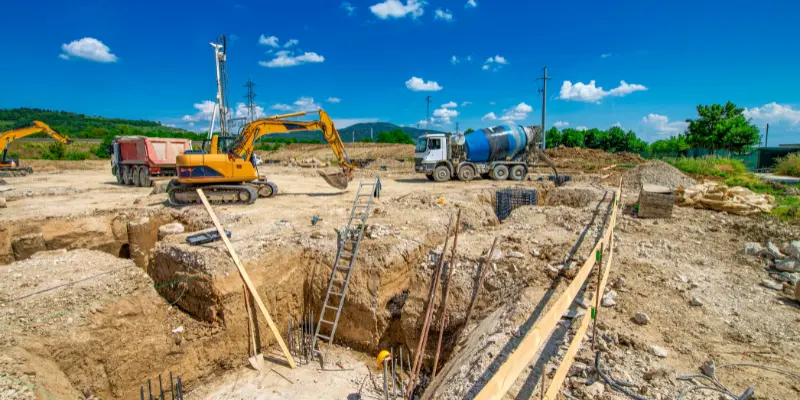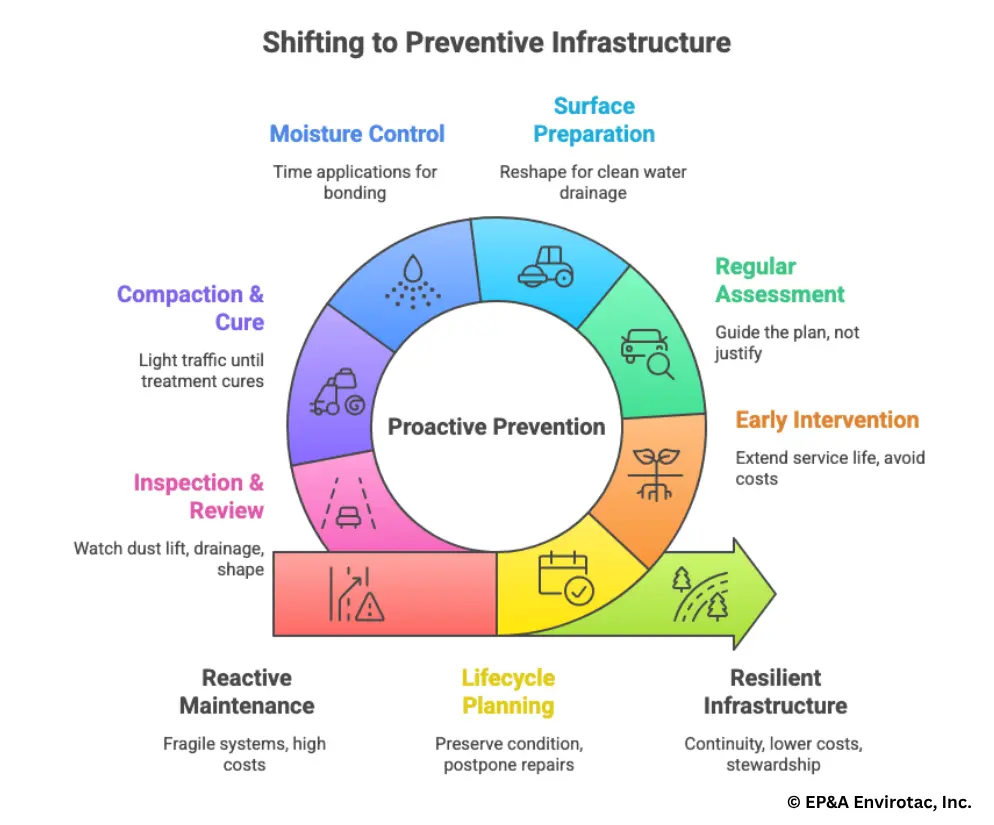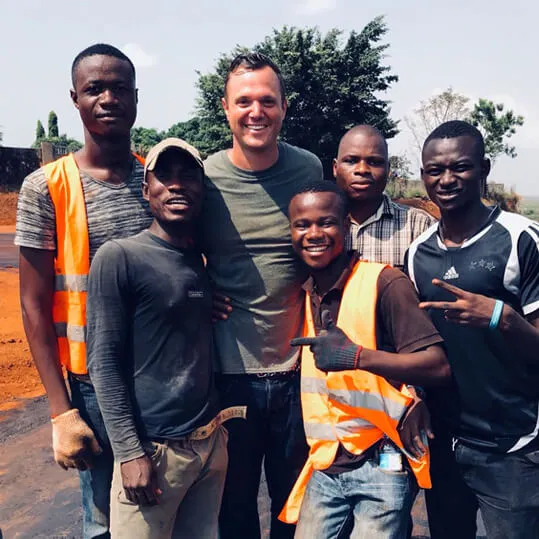
October 24, 2025
How systems built on reaction can find resilience in foresight.
The Comfort of Crisis
Every dry season, the routine unfolds in the same way — roads watered, dust tamped, graders humming under a pale horizon. It feels responsible. Active. Necessary.
But by noon, the surface loosens again, and by week’s end the cycle repeats: more passes, more fuel, more cost.
We tell ourselves this is maintenance. Yet the pattern hides a contradiction — the more we fix, the more fragile things seem to become. Because maybe what’s broken isn’t the road at all, but the rhythm of how we care for it.
Every emergency response starts as something that could have been prevented. And yet, emergencies keep winning the budget conversation. Perhaps that’s the quiet failure inside the system: the way urgency earns attention, while prevention stays invisible.
Maybe the issue isn’t what we build, but how we measure its life.
The Quiet Bias Toward Crisis
Emergencies make sense to institutions.
They’re visible, reportable, and loud — exactly the kind of moments that unlock budgets and earn credit for “action.” Prevention, by contrast, is quiet. A road that doesn’t fail, a slope that doesn’t move — these look like nothing happened, even though that “nothing” is the outcome we wanted.
Public agencies have already defined the playbook: life-cycle planning exists to preserve conditions and postpone costly repairs. But the incentive structure still rewards reaction. Agency performance metrics often emphasize how quickly crews respond after a failure, while avoided failures are rarely credited or funded — even though preventive work is what keeps the asset from failing in the first place. Procurement defaults to familiarity — water trucks, chloride, graders on call — because those are easier to explain after a breakdown.
Meanwhile, unpaved road maintenance guides explicitly frame dust suppression and surface stabilization as program elements — meant to be scheduled, not scrambled. The tools exist; they will wait for a headline.
As a result, delay becomes a habit. Each postponed intervention compounds into higher costs, environmental loss, and risk to both humans and wildlife. Researchers and agencies alike have documented that emergency maintenance pushes the total cost far above what scheduled preservation would have required.
It isn’t negligence. It’s visibility. The reaction is loud, so it keeps winning. But resilience lives in the quiet intervals — in the road that holds through a storm, in the season that passes without alarm.
Preventive infrastructure isn’t the absence of a crisis.
It’s the architecture of continuity.
Why the System Delays, and What That Delay Really Costs
Asset management already knows how to think long term. Lifecycle cost analysis (LCCA) is not a slogan; it’s embedded in federal and international frameworks. FHWA defines preservation as “keeping good roads good,” and studies show early interventions cost a fraction of later rehabilitation. Manuals from the U.S. Forest Service and Austroads both describe dust control products and stabilizers as scheduled program elements, not emergency responses.
The knowledge exists. The rhythm doesn’t.
Budgets and reporting still favor what can be seen after something breaks: mobilizations, overtime, surface work. Familiar materials feel safe to specify, even when they’re inefficient. So water, chloride, and lignin keep circulating, though field guides now list soil stabilization polymers — including acrylic polymer soil stabilization systems — as effective options for preventive road care.
Delays also hide in accounting. Corrosion, sediment, and fines lost to dust fall on different ledgers. Chlorides accelerate vehicle and bridge corrosion, while runoff affects vegetation and water bodies. Acrylic polymer emulsions, by contrast, don’t introduce chloride into the soil and are documented to hold fines in place over longer service intervals when they’re applied and cured correctly — yet they’re often overlooked because purchasing rules favor cheaper, familiar materials that win lowest-price bids.
No solution is universal. Soil type, traffic, and climate decide success more than chemistry alone. Guidance from FHWA and Austroads remains consistent: crown first, moisture within range, uniform application, cure undisturbed. Within that discipline, soil stabilization products such as acrylic polymer binders have demonstrated durability across wet–dry and freeze–thaw cycles. They create a bonded surface layer that holds fines in place, resists erosion, and cuts dust lift — without introducing the chloride load that drives corrosion and runoff risk.
The goal isn’t to find a miracle additive. It’s to align design, timing, and practice — the small choices that decide whether the system drifts toward decay or holds its shape.
When prevention is deferred, every road becomes an hourglass. Surfaces unravel, ditches clog, and budgets spiral back to triage. Manuals have warned for decades that unmanaged dust and lost fines shorten life and raise network-wide cost.
Preventive treatment, on the other hand, leaves no drama to measure, which is precisely the problem. Success looks like nothing happened. Yet in lifecycle terms, “nothing happened” is the highest form of performance.
The Architecture of Continuity
Preventive infrastructure means treating the road surface like an asset to be preserved on a schedule, instead of something to be rescued after failure.
Where reaction celebrates the fix, prevention builds a rhythm: assess, prepare, bind, rest, repeat. FHWA and state DOT case studies show that applying preservation treatments early can extend service life and avoid having to spend many times more on full rehabilitation or reconstruction later — often described as one dollar spent now preventing six to ten dollars of future work.
USFS and Austroads studies echo it: small, early interventions outperform heroic rebuilds.
Competent programs begin with assessment — regular scoring of cross-section, drainage, gravel loss, and dust. These scores guide the plan, not just justify it. Then surface preparation—reshape the crown and shoulder so water drains cleanly. Every manual repeats the same rule: shape before bind.

Moisture defines success
Applications are timed to when the road surface is brought near optimum moisture content — wet enough to compact and penetrate, not so wet that it sheens — so the stabilizer can bond. Calibrated distributors typically apply on the order of 1.4 to 4.5 liters per square meter for diluted synthetic polymer emulsions, with exact rates set by soil type and traffic.
For acrylic soil stabilization polymers, that moisture window helps the emulsion create a bonded surface layer that holds fines in place, reduces dust lift, and helps the road carry traffic without raveling. Field programs from the U.S. Forest Service’s San Dimas center and from Austroads report that treated surfaces hold their shape longer — requiring fewer grading passes — and can significantly reduce airborne dust compared with untreated roads, depending on soil and traffic.
Then comes compaction and cure — light traffic and no grading until the treatment has cured per specification. Inspection closes the loop: an early post-treatment check, then periodic reviews through the season to watch dust lift, drainage, and surface shape.
Drainage remains the first defense; most failures start in blocked ditches, not bad chemistry.
When these steps become a habit, the economics shift.
Each avoided water-truck run saves diesel and emissions. Stable surfaces reduce particulate drift, vehicle wear, and crash risk. EPA and international development analyses trace those avoided impacts as environmental and social value, not just financial savings.
That’s the compounding return of attention — resilient infrastructure through rhythm.
In the end, prevention isn’t maintenance. It’s stewardship — of material, of budgets, of trust in the ground.
The most successful programs don’t celebrate what they fix.
They take quiet pride in the miles the weather forgets to test.
Conclusion: The Roads That Remember
Every season leaves its mark. Wind carves, water drifts, and time keeps its quiet arithmetic. We often think the mark of good work is what’s visible — the repaired, the replaced, the freshly graded. But maybe the real measure lies in what stays unseen: the roads that hold, the slopes that stay still, the air that doesn’t haze at noon.
Because the point of maintenance isn’t control—it’s continuity.
Each time we plan before the problem, we widen the window between events — not just for infrastructure, but for everyone who depends on it. That window is where resilience actually lives: in foresight that feels invisible, in systems that work because someone chose to care early.
In that sense, prevention isn’t an expense. It’s a kind of faith — faith that quiet care matters, even when no one is watching, even when there’s no ribbon to cut.
The best infrastructure doesn’t just survive the weather.
It teaches us what endurance really means.
If your maintenance program is ready to shift from reaction to prevention, our specialists design soil stabilization polymers and dust control products that align with long-term lifecycle cost strategies.
When you plan early, every dollar lasts longer — and every surface tells a quieter story of resilience.
Contact us to learn more about preventive infrastructure strategies.Applications - Dust Control & Soil Stabilization Products


Leave a Reply